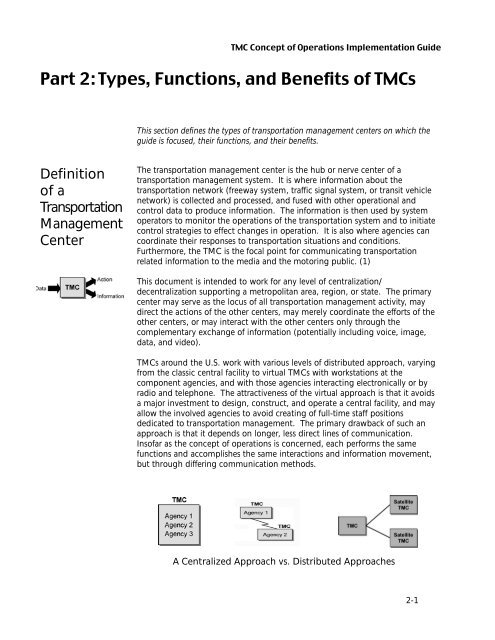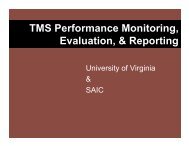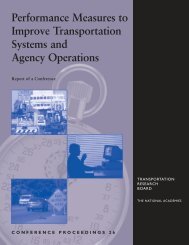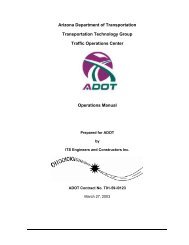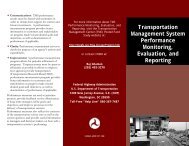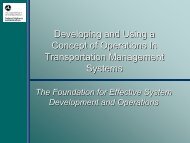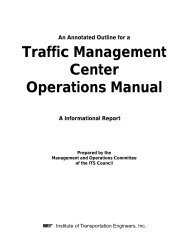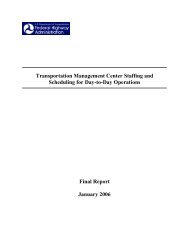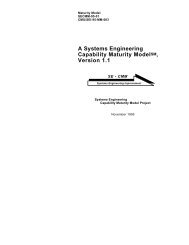Transportation Management Center Concepts of Operations
Transportation Management Center Concepts of Operations
Transportation Management Center Concepts of Operations
- No tags were found...
You also want an ePaper? Increase the reach of your titles
YUMPU automatically turns print PDFs into web optimized ePapers that Google loves.
This section defines the types <strong>of</strong> transportation management centers on which theguide is focused, their functions, and their benefits.Definition<strong>of</strong> a<strong>Transportation</strong><strong>Management</strong><strong>Center</strong>The transportation management center is the hub or nerve center <strong>of</strong> atransportation management system. It is where information about thetransportation network (freeway system, traffic signal system, or transit vehiclenetwork) is collected and processed, and fused with other operational andcontrol data to produce information. The information is then used by systemoperators to monitor the operations <strong>of</strong> the transportation system and to initiatecontrol strategies to effect changes in operation. It is also where agencies cancoordinate their responses to transportation situations and conditions.Furthermore, the TMC is the focal point for communicating transportationrelated information to the media and the motoring public. (1)This document is intended to work for any level <strong>of</strong> centralization/decentralization supporting a metropolitan area, region, or state. The primarycenter may serve as the locus <strong>of</strong> all transportation management activity, maydirect the actions <strong>of</strong> the other centers, may merely coordinate the efforts <strong>of</strong> theother centers, or may interact with the other centers only through thecomplementary exchange <strong>of</strong> information (potentially including voice, image,data, and video).TMCs around the U.S. work with various levels <strong>of</strong> distributed approach, varyingfrom the classic central facility to virtual TMCs with workstations at thecomponent agencies, and with those agencies interacting electronically or byradio and telephone. The attractiveness <strong>of</strong> the virtual approach is that it avoidsa major investment to design, construct, and operate a central facility, and mayallow the involved agencies to avoid creating <strong>of</strong> full-time staff positionsdedicated to transportation management. The primary drawback <strong>of</strong> such anapproach is that it depends on longer, less direct lines <strong>of</strong> communication.Ins<strong>of</strong>ar as the concept <strong>of</strong> operations is concerned, each performs the samefunctions and accomplishes the same interactions and information movement,but through differing communication methods.A Centralized Approach vs. Distributed Approaches2-1


